In the winter, the garden looks so bare that despite the pictures I've taken from the growing season it's hard to believe that it will all spring back again as full as it was. By January, my memories are clouded and I find myself circling way too many 'must buy' plants for the spring. Beguiled by the beautiful pictures and descriptions, in April you can find me on my porch surrounded by boxes of precious cargo wondering "Where am I going to put all of these?" In addition, I can't help but make forays to the local nurseries adding to my conundrum.
So, last winter I formed a plan to review all the pictures and notes I took during the year. This helped me see gaps in the plantings and under performers. It also reminds me of areas that I can layer the plantings to extend the show. For example, oriental poppies take up a lot of space, but bloom for only a short time and their leaves die back soon afterward. So, I cut the leaves back after they bloomed and plant Abyssinian glads around them. In mid July, the Abyssinian glads begin to bloom. By the time the poppies reemerge in the fall, the glads are ready to be dug up for the winter.
I love to cut flowers to bring in the house or give as gifts. At this time I also think about what plants did I wish I had more of or were there times when I didn't have much for cutting. I also keep track of where I like to plant dahlias and glads which are great cut flowers and add beauty to the garden.
Pictures also help to jog my memory as to where self seeders will fill in the garden, so I don't order plants expecting them to take spaces I've reserved for nature's gifts. In many of my gardens I allow one self seeder to provide an accent: in the front border it's verbena bonariensis; Queen Anne's lace in the Cutting Garden; around the oak in the front garden its cerinthe major; forget-me-nots in the Bird Garden; and annual black eyed susans in the Egg Garden.
Every year I have movers and those to be removed. The movers are either unhappy where they are; I don't like where they are; or their neighbors don't like them. These are listed and I note where they are moving to so that I don't re allot that space to a new purchase. Plants which will be divided are put on this list too because some of the divisions can be used to fill empty areas. Under performers or plants tried, but not liked, are slotted for removal.
At this point I should have a good list of planting spots to think about as I approach my spring order. From then on I keep a master list of all my orders and exactly where they are going. Once the boxes arrive it is quick and easy to plant them where they belong and I can prepare the planting areas ahead of time. This system works pretty well. Yet, there's always room for one more.
How do you plan your ordering? Please share any ideas that you have.
Welcome to Heirloom Gardener
Friday, December 14, 2007
Garden Planning Before the Catalogs Arrive
Posted by
Julia Erickson
at
2:20 PM
![]()
![]()
Labels: Garden Planning
Subscribe to:
Post Comments (Atom)
Search Heirloom Gardener
Labels
- About Blogging
- Annuals/Biennials and Perennials
- Autumn Garden
- Books and Movies
- Botanical Gardens
- Bulbs and Tubers
- Children's Garden
- Chrysanthemum
- Clematis
- Container Gardening
- Crocus tommasiniasus roseus
- Cut and Forced Flowers
- Cutting and Rose Gardens
- Dahlias
- Deep Thoughts About Gardening
- Egg Garden
- Fences Arbors Walls and Paths
- Floral arrangements
- Front Border
- Fun Stories About Gardening
- Garden Bloggers' Bloom Day
- Garden Bloggers' Design Workshop
- Garden Planning
- Gardening Blogs
- Gardening Tools and Structures
- Gardening with Children
- Goldberry Hill
- Heirloom and Organic Food
- Hibiscus
- Holidays
- Hydrangeas
- Japanese Beautyberry
- Lilies
- Mixed Borders
- New Jersey / Local Interest
- Nurseries
- Online Gardening Resources
- Peonies
- Pest Control
- Picture This Photo Contest
- Piet Oudolf
- Poppies
- Propagation and Seeds
- Pruning and Maintenance
- Roses
- Seed Heads
- Self Seeders
- Shrubs
- Spring Garden
- Summer Garden
- Trees
- Wildlife in the Garden
- Winter Garden
- Zinia
Blog Archive
-
▼
2007
(48)
-
▼
December
(34)
- Salve for the Gardener's Winter Blues: How to Gro...
- Q. What Do You Do With Rocky Soil? A. Make Dry La...
- You Grow Girl Blog: Plant-Related Christmas Gift ...
- Q: How Do You Keep Deer Out Of The Backyard? A: ...
- Cold Climate Gardening Blog: Why Aren't There Mor...
- Common Witchhazel Blooming in December
- Christmas Decorations from the Garden
- Cut Heavenly Bamboo (Nandina)
- Heavenly Bamboo (Nandina) in December
- The Garden in Winter by Suzy Bales
- Container Gardening: Autumn Cleanup and Rosemary ...
- Gardening with Children: How to Build a Children'...
- Gardening Gone Wild: Fences, Walls & Paths
- Heirloom Gardener Magazine
- Heritage Rose: Flowers in December
- Old Farmer's Almanac Gardening 2008 Calendar
- Garden Planning Before the Catalogs Arrive
- Creating the Rose Garden with a Central Brick Path
- Gardening with Children: Creating the Children's ...
- Complicata Rose Hips
- Winter Garden Highlight: Annabelle Hydrangea
- Brooklyn: Private and Public Gardens
- Russell's Cottage Rose
- Hansa Rose
- Star of the Republic Rose
- Japanese Beautyberry
- The Hellenbrechts in Ohio: Christmas Green
- Dortmund Rose Hips
- Blackberry Lily Seedheads
- Container Gardening: Winter Containers
- Vegetables and Herbs: How to Build Raised Vegetab...
- Ballerina Rose Hips
- Crabapple Tree in Winter
- Hydrangea Wrapped For Winter
-
▼
December
(34)








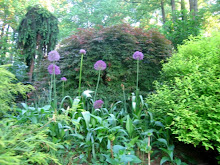
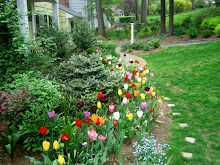
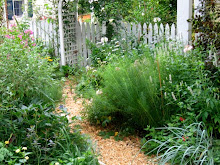
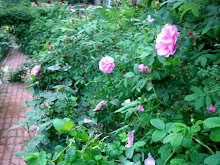

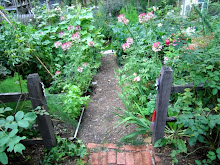

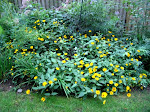
No comments:
Post a Comment